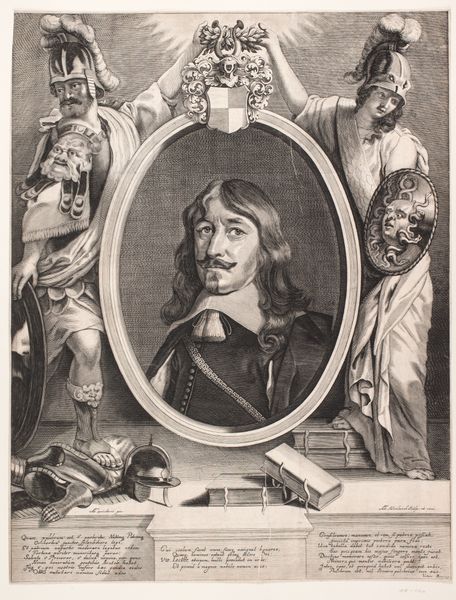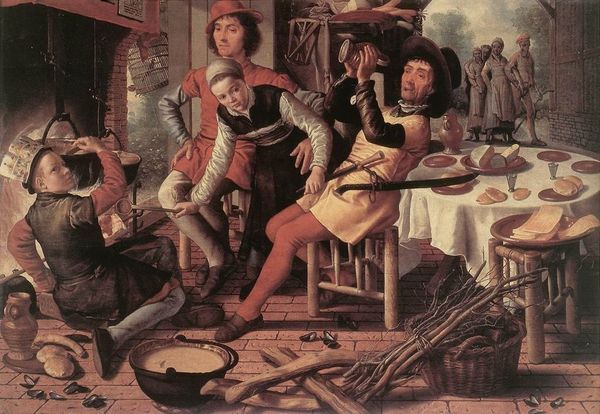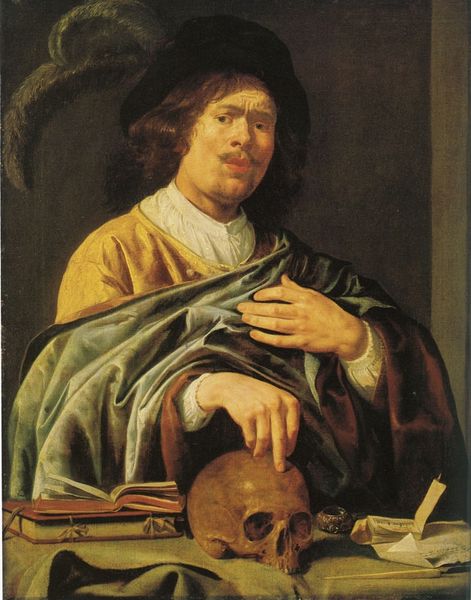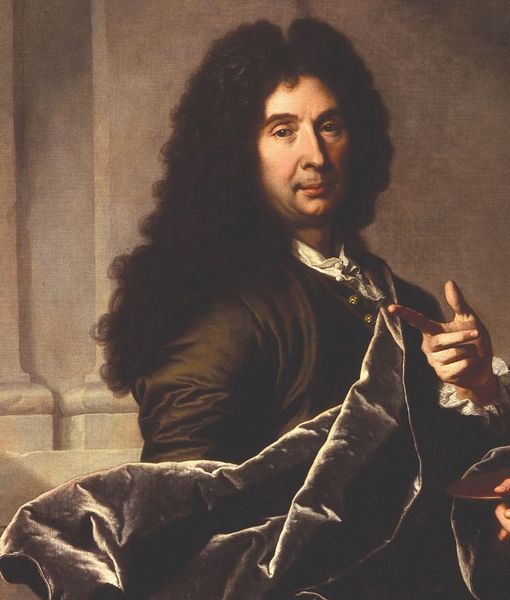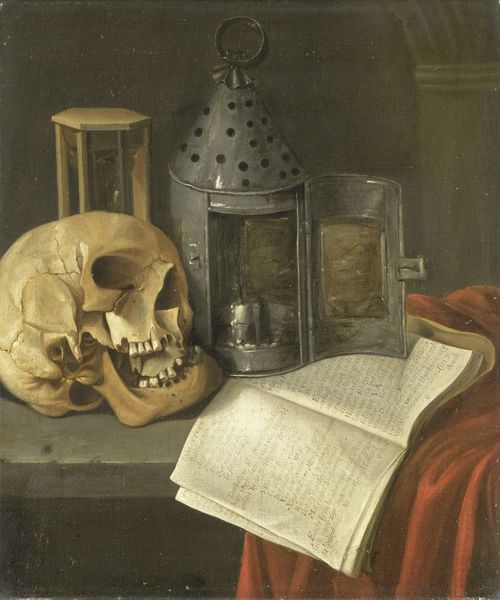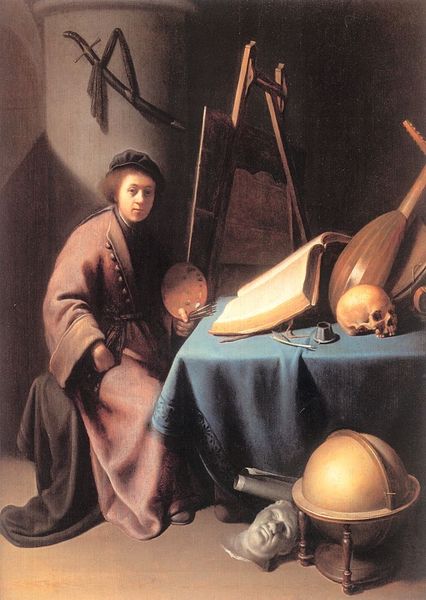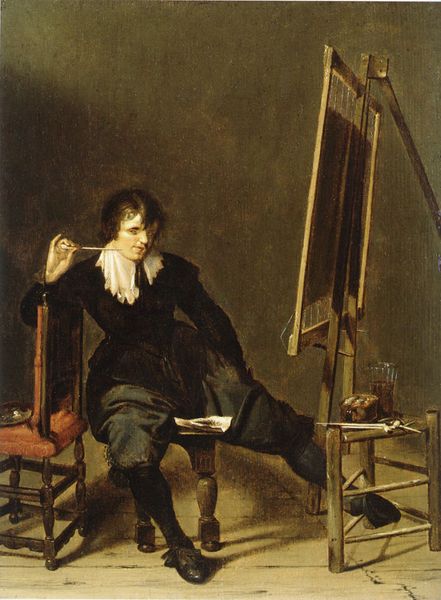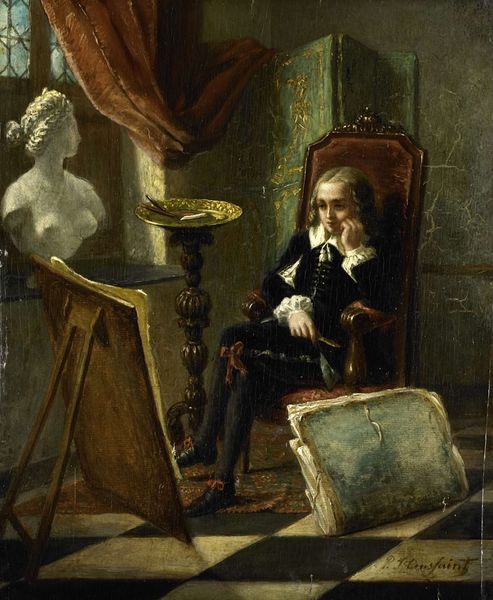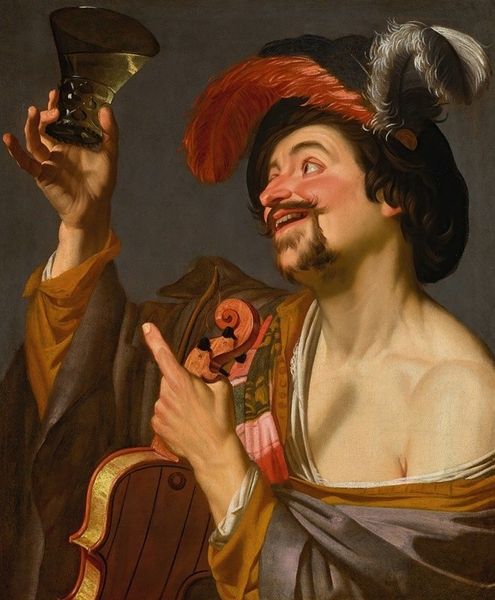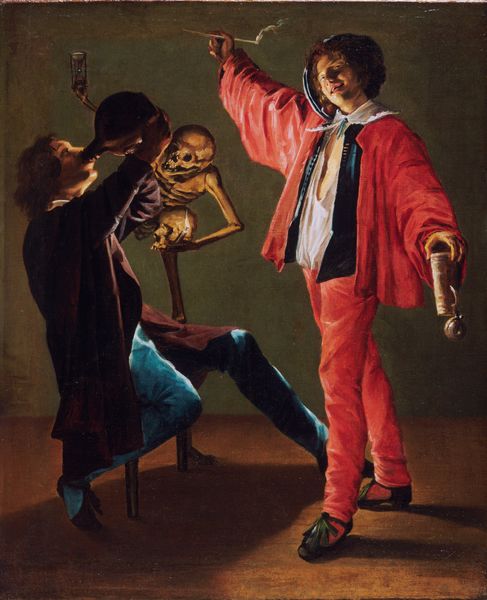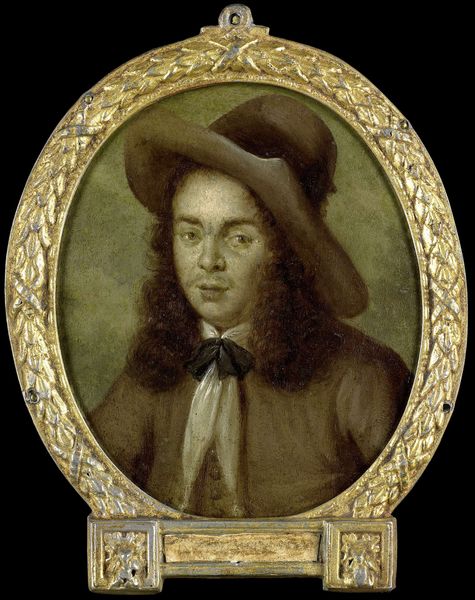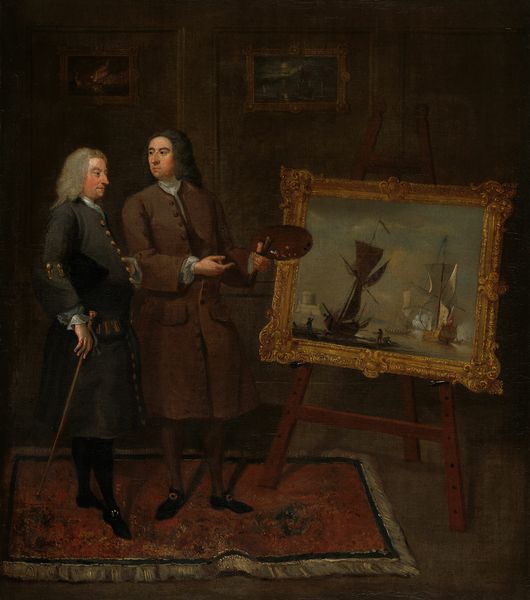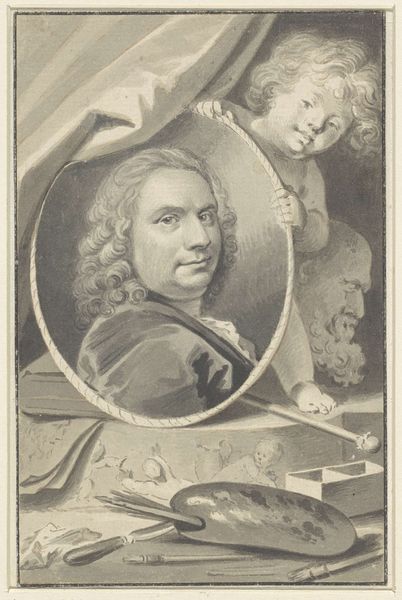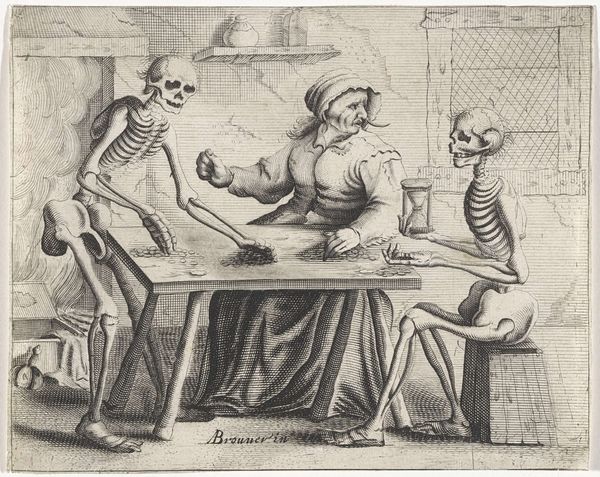
Copyright: Public domain
Art Historian: Here’s a painting to consider… Editor: That's David Bailly's "Self-Portrait with Vanitas Symbols" from 1651. It's quite a collection of objects, isn’t it? There are so many things competing for my attention – a skull, portraits within the portrait… What do you see in this piece? Art Historian: I'm struck by the artist’s careful crafting and the overt display of material wealth juxtaposed with the memento mori. Consider the process. Oil paint allowed Bailly to mimic textures: skin, glass, fabric. All that labor and raw material to remind us of inevitable decay... Is that irony lost or gained on the viewer? Editor: That’s a really good point about the labor that goes into creating it versus the message about fleeting existence. All the stuff… How did the artistic process and societal forces connect to what we are looking at in front of us? Art Historian: Think about 17th-century Dutch society. Flourishing trade meant new wealth and access to goods. These "vanitas" paintings weren't just about death; they were about anxieties around consumption, showing off privilege, and the cost of maintaining that image. Look at all those discrete artworks. Does this self-portrait risk commodifying Bailly himself? Editor: That’s such an interesting way to read it, particularly considering the market for these kinds of paintings at the time. So the value isn’t just aesthetic; it's embedded in this network of material anxieties. It feels less straightforwardly moralistic now, but that creates so much more to think about. Art Historian: Precisely! Shifting the focus to materiality and production adds another layer of depth. Now the message about the artist as artisan becomes an even deeper theme of the artwork.
Comments
No comments
Be the first to comment and join the conversation on the ultimate creative platform.
